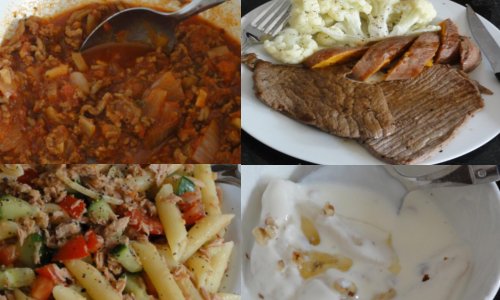Burn fat fast and lose weight healthily
No hunger, no gym, no drugs, completely free forever
Hi, GI Chow is a resource to inspire and help those looking to lose weight for health or aesthetic reasons. It is based on my own experience of losing over 26kg (4 stone) in 7 months in 2012.

Transformation picture of author: 25th October 2015 (profile) ..3 years on and a healthy, happy 72kg!

Transformation picture of author: 21st December 2018 (profile) ..6 years on and a healthy, happy 75kg!
My motivation was to reduce my risk of developing diabetes and to feel physically healthier and more attractive. I wanted to find a reliable, consistent and cheap way to do this without having to endure hunger, take on unsustainable diet or exercise regimes or take unnatural drugs.
Through research and experiment on myself I was amazed to find a very simple and well understood biochemical principle (the insulin response) which when applied to diet (specifically the glycaemic index and glycaemic load of what we eat) has a profound effect on how fat we are and stay. Part of what I found so incredible is that despite the wealth of information in the media and huge array of nominally healthy foods we find in supermarkets this simple piece of information and its overwhelming significance over and above all the other healthy eating messages out there had not gotten through. In fact there are quite contradictory messages and virtually all the convenience food choices (even the ostensibly healthy ones) available to us keep us fat.
To what extent do we trust received wisdom and the truths offered or perhaps even ‘sold’ – literally as well as metaphorically – to us? Just as history is said to be written by the victors, perhaps our perception of the present is equally manipulated by those with their own agendas to push. After all, every piece of information takes time, effort and hence money to be propagated.
Several family members, friends and acquaintances noticed my weight loss and asked how I’d achieved this so I set up this site as
(i) somewhere to refer them to – so they had somewhere to go after they’d forgotten what I told them!
(ii) a record of my findings in the hope that it might benefit the wider community
(iii) an experimental business to educate people on a few basic facts about nutrition and biochemistry whose application to one’s diet alone can have a profound impact on obesity – possibly the most significant epidemic in the ‘developed’ world.
(iv) an investigation into how what we consider to be the ‘truth’ comes to be recognised as such.
I went from over 92.9kg (205 pounds, 34.7% i.e. 32.2kg fat) to under 66.6kg (147 pounds, 18% i.e. 12kg fat) in 7 months i.e. of the 26.3kg I lost most (20kg) of the weight loss was fat. My muscle reduced a little from 30.1% (28kg) to 39.1% (26kg) however that is a healthy level of loss given I no longer have to haul so much superfluous weight around (which was also putting damaging levels of strain on my joints and tendons and causing other health/quality of life problems).
Of course I should probably include the usual disclaimer that I’m not medically qualified or a nutritionist and that you should see your doctor if you have any concerns that you may have a medical condition affecting your weight or diet before starting to lose weight.
The fact is though that you can forget about worrying that you have a fat gene or low metabolism or are too lazy to spend hours each week exercising. Your body’s designed to gain and lose weight easily to deal with periods of excess and paucity in nature’s bounty of available food and, with a little understanding of how your body works, the very same natural drives you instinctively followed to get to your current weight will get you to any weight you choose to be. In fact you’ll lose weight scarily fast and have to consciously decide not to drop below the weight that’s healthy for you.
Good luck – though you really don’t need it if you read and then follow the handful of tips we have. There’s a shedload of stuff on losing weight – on the net, TV, books and magazines – and a host of companies who’ll claim to help you but I’ve tried to distil the information that helped me into a handful of tips you can read in a few minutes so just start in that section!
All the best,
Nik
© GI Chow and N Ilukkumbure, 2012. Unauthorized use and/or duplication of content without express and written permission from the author is prohibited. Excerpts and links may be used, provided that full and clear credit is given to GI Chow with appropriate and specific direction to the original content. All trademarks are the property of their owners and no endorsement should be presumed unless otherwise stated.



